Face Off: Two Slippery New Superbikes
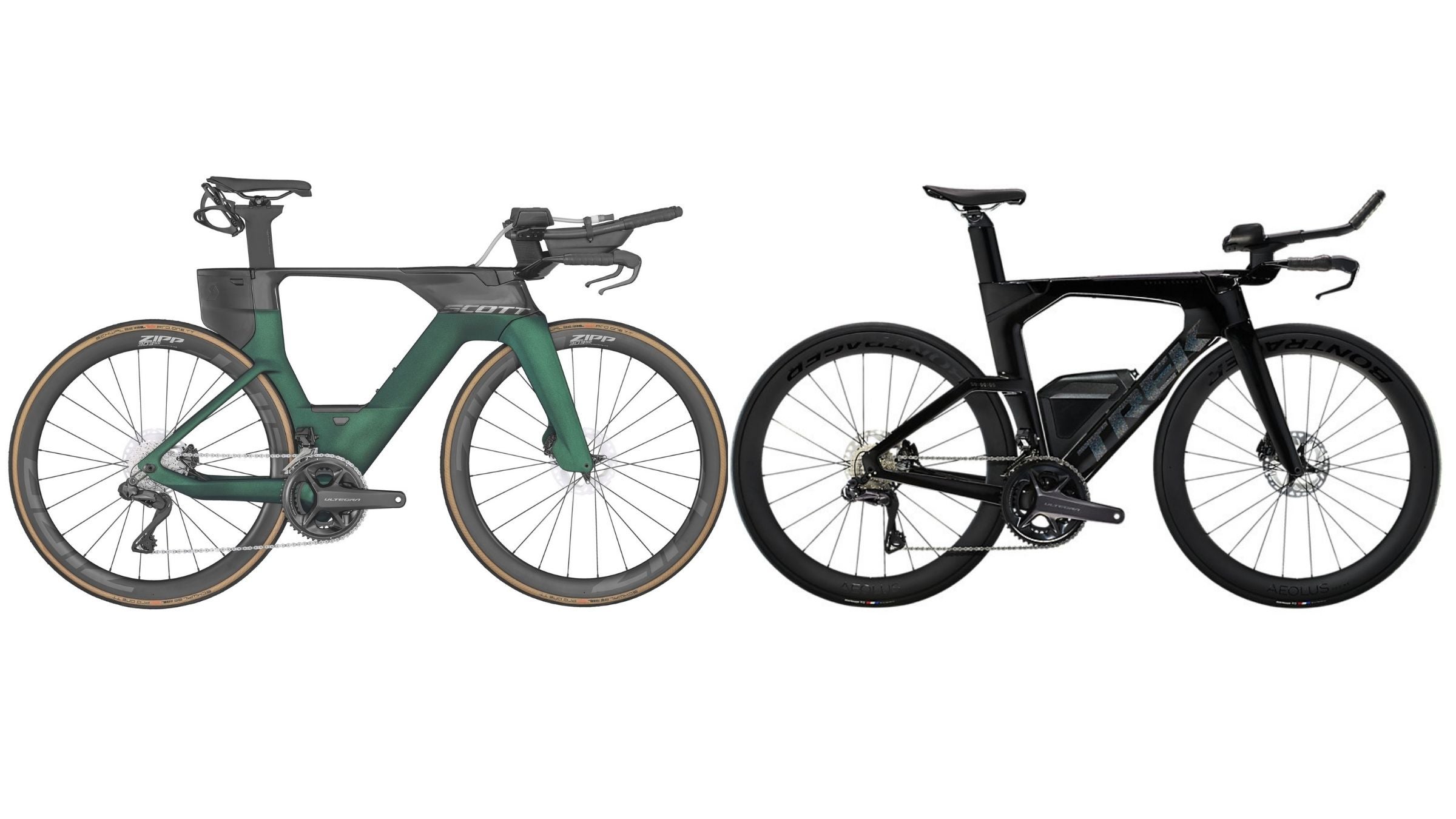
Table of Contents
The last few years have been a funny time for tri superbikes. Pandemic notwithstanding (though it does still stand, of course), more than a few brands have been sitting patiently on the sidelines to see how this whole “disc brake thing” pans out. And as a result, we’ve seen some of our favorite bike companies finally release killer disc-only frames with major aero updates to boot.
With that in mind, we’ve chosen the Scott Plasma 6 RC Pro, our pick for 2021’s Best New Bike, and pitted it against our favorite new bike of 2022 (so far), Trek’s third generation Speed Concept SLR 7. Both come from major brands with a big continued presence in tr- that have finally gone full disc, both are quite high end, and yet both take very different approaches to the needs of a triathlete. Let’s dig in.
RELATED: Deep Dive: Scott Plasma 6 Triathlon Bike
The Facts and Similarities
Before we break down each bike individually, then compare the two, then call out a winner (and there will be a real winner here, not some fluffy “well-this-is-a-tough-call” situation, promise!), let’s take a look at the facts on each bike and talk about what’s similar:
| Scott Plasma 6 RC Pro | Trek Speed Concept SLR 7 | |
| Components | Ultegra Di2 | Ultegra Di2 |
| Wheels | Zipp 303SE | Aeolus Pro 51 |
| Sizes Available | XS, S, M, L, XL | S, M, L, XL |
| Notable Features | Built-in hydration/nutrition/storage | Suspension |
| Weight | 20 lbs 10 oz (all hydration, storage removed) | 19 lbs, 10 oz (all hydration storage removed |
| Price | $10,000 | $9,500 |
Both bikes are fully hydraulic Ultegra Di2 equipped (including the crankset), both fall into basically the exact same price range, and both come with race-ready(ish) wheelsets. Both also claim to have extensive aerodynamics testing, that of course we can’t verify, but it’s safe to say that they’re at least close, within each model’s self-imposed limites (more on that below). But that’s basically where the similarities end.
Scott Plasma 6 RC Pro
Before we dive into the specifics of what separates this bike from the third-generation Speed Concept, it’s important to note one big, fundamental difference: The Plasma 6 is not bound by UCI rules. To make a long story short, this simply means that Scott’s pro tour riders can’t race this in a major tour because of its long tail shapes that don’t conform to the UCI rulebook. This is no non-double-diamond bike, to be sure, but the point is that this is a bike for triathletes, build around their needs for aerodynamics and—more importantly hydration and nutrition storage. That’s a big difference and a big note.
With that in mind, the storage and hydration options on this setup are the tri bike equivalent of a big rig. There aren’t many bikes on the market with as much built-in and ready to go (Canyon’s Speedmax comes to mind). Up front, there’s a between-the-arms bento-type storage container where you can mount your computer and stash the straw that comes from the in-frame 575mL/620mL bladder in the top tube. In the rear, the bike comes loaded with two behind-the-saddle water bottle holders and a storage box for things like a flat kit. In the bottom of the frame’s triangle, Scott also has a handy 400mL gel flask and a water-bottle mount on the downtube. When taken as a whole, this amounts to the potential for nearly 100 ounces of fluid/gels, with additional built-in space for solids.
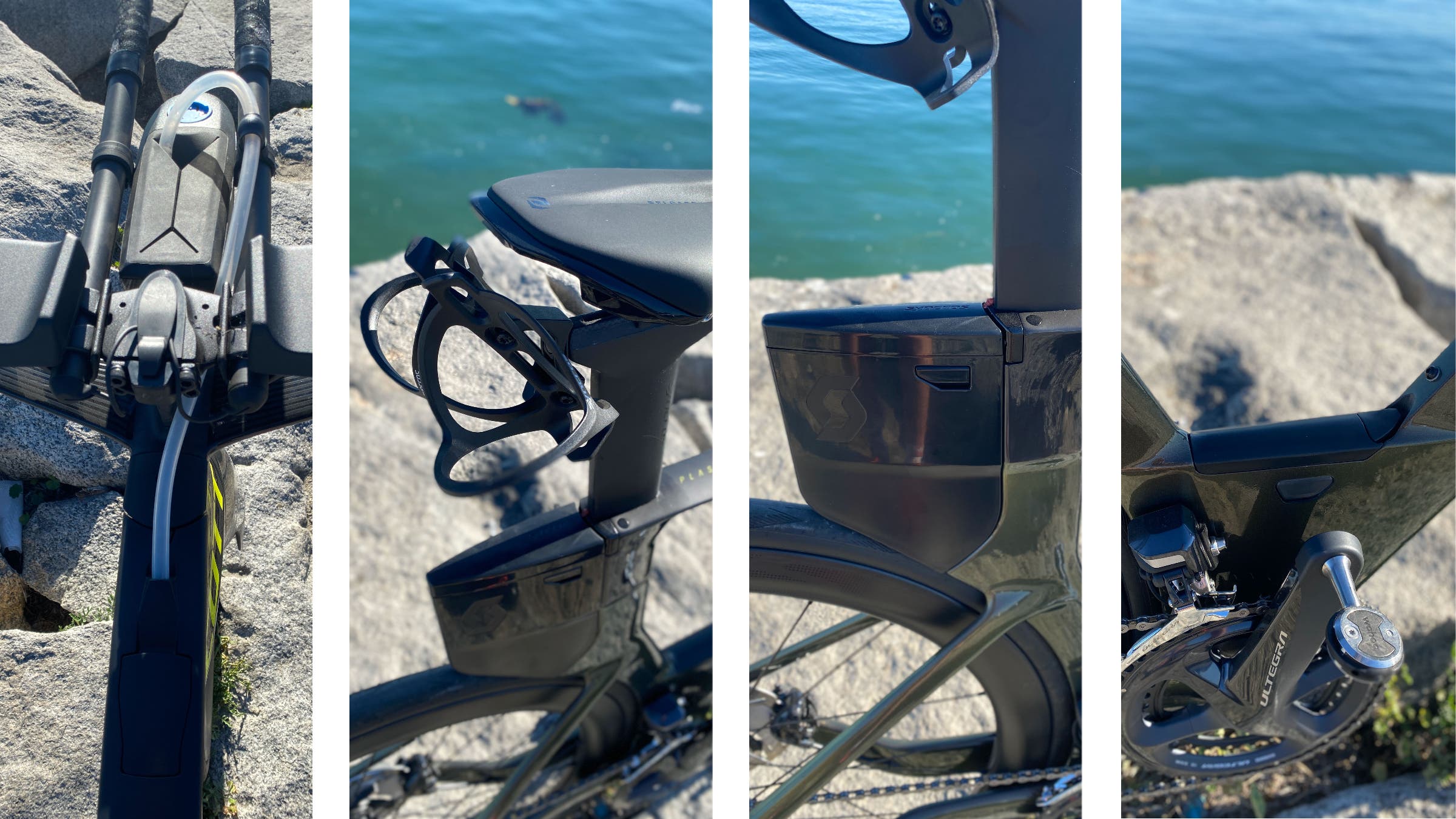
In terms of aerodynamics, the UCI-breaking head tube and disc-brake cowling on the fork might add weight, but certainly creates much sleeker lines than we see on the Speed Concept, but of course that’s simply eyeball wind tunnel work.
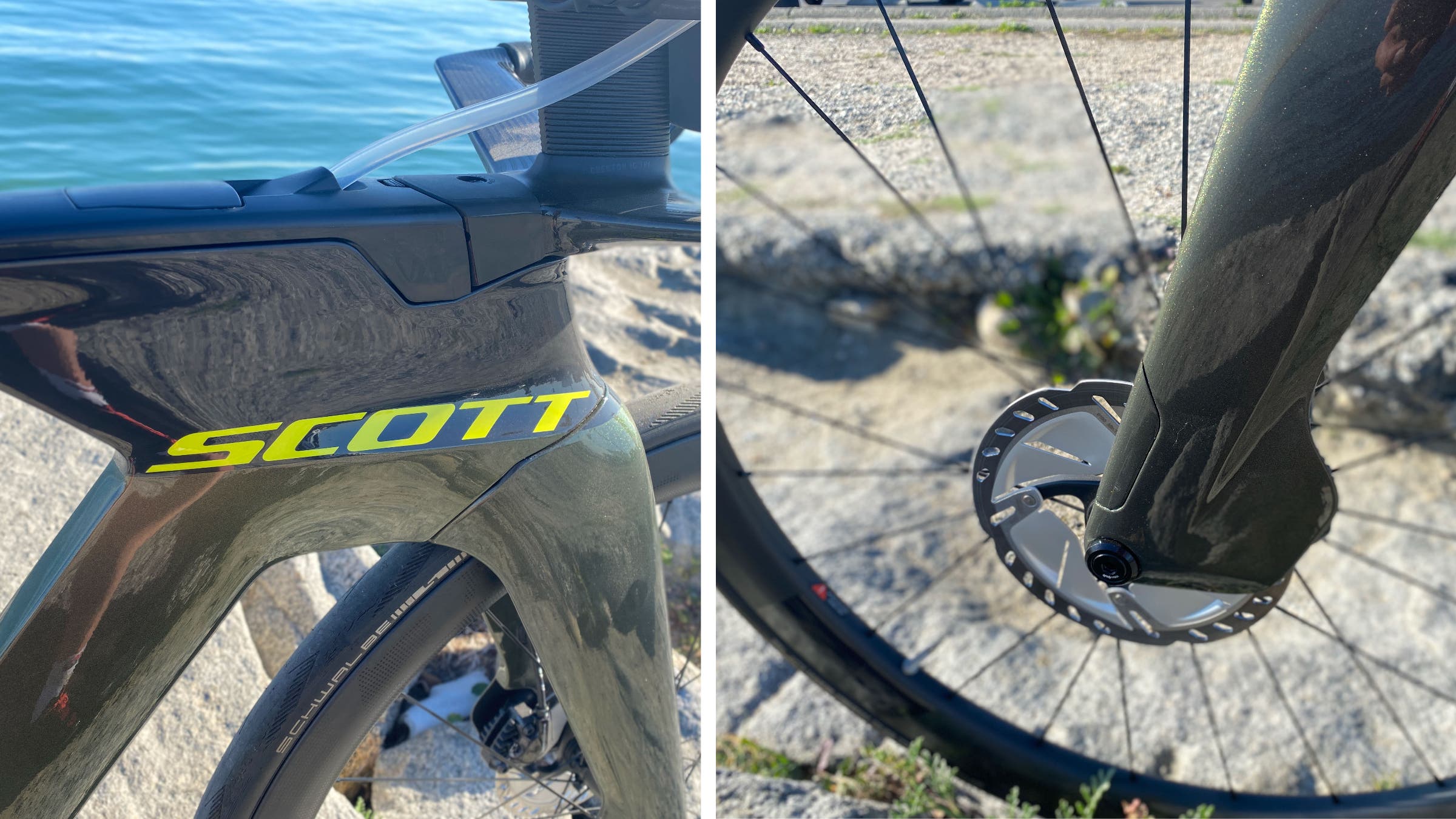
In terms of ride quality—the stuff you won’t see on paper—the Scott is one of those nice high-end unicorns that splits the fine line between comfy and responsive. When compared head-to-head with the Speed Concept in testing, the Plasma was considerably smoother over all types of bumps—low- to -high-frequency—which is surprising given the beefiness of the bottom bracket and fork. We also found the Plasma to have excellent, nearly hands-free straight-line handling, despite the aerobars, and yet still cornered very very well—likely thanks to the position of the low base bars.
Finally, in the last bit of “you-won’t-see-this-on-paper” notes, the paint job on the RC Pro is stunning. For years Trek took the title of best paint job on their Speed Concept line, but the flaked inlay on the Plasma frame is hands-down one of the best we’ve seen. Not like it always matters, but it does sometimes.
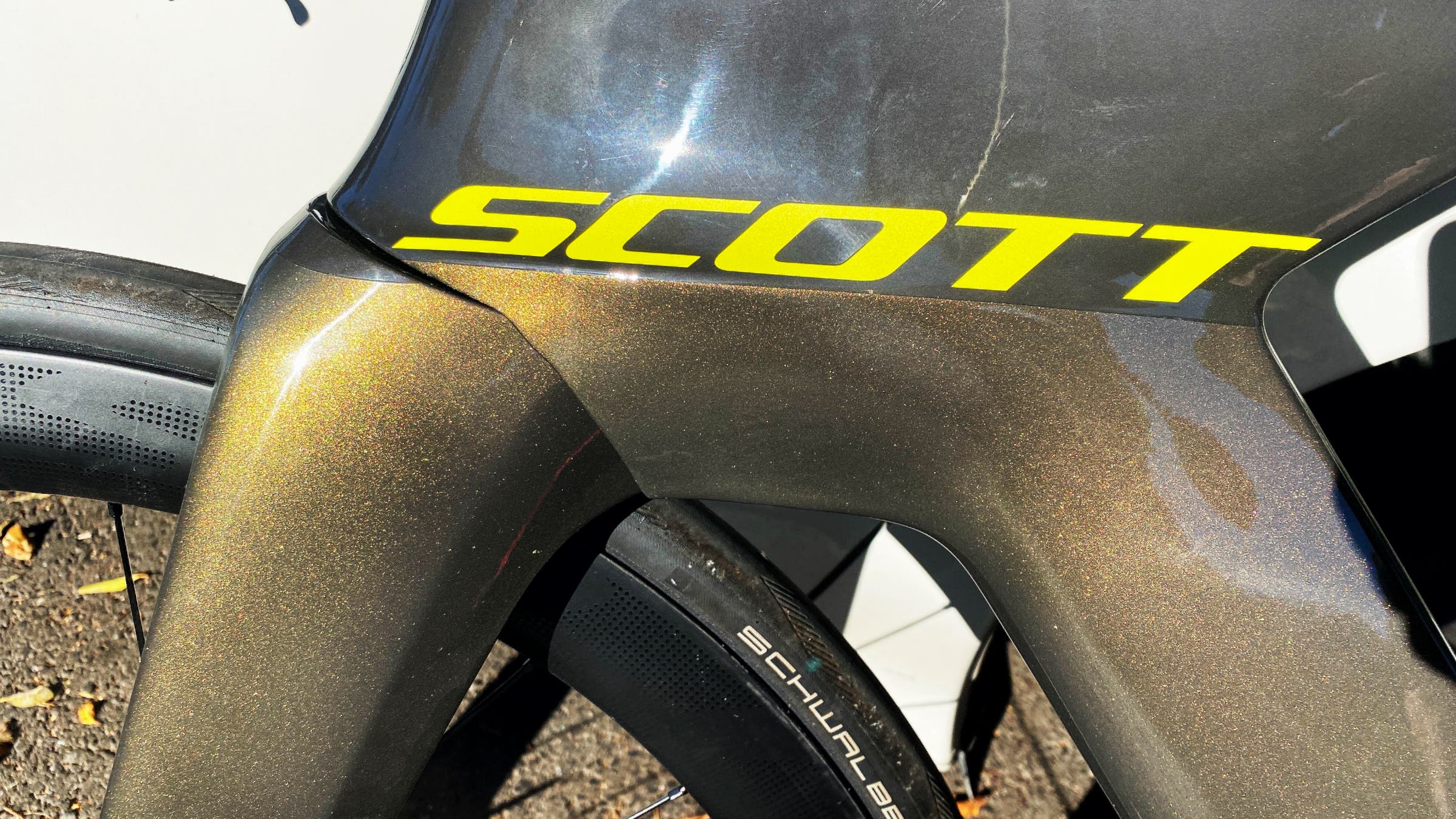
Trek Speed Concept SLR 7
As we touched on in the Scott review, while this is Trek’s first foray into a disc-only frame, they’ve hedged their bets a bit by sticking to the UCI rules—likely due to their Protour needs. As a result, the new Speed Concept is not a particularly eye-catching bike, when it comes to aero sections, but it is well thought out.
In particular, this is the first tri bike we’ve seen with any kind of built-in suspension (aside from the result of non-double-diamond designs and their top-tube flex). Trek calls it IsoSpeed, and though they’ve used the tech since around 2012, the elastomer-based version in the Speed Concept is the first of its kind on a tri bike. The long and short of it is that the seatpost is slightly decoupled from the frameset and braced with a slightly squishy plastic that allows some movement over bumps without causing flex when you pedal.
In practice, however, we didn’t find a ton of difference when it came to ride quality. For sure super high-frequency chatter, like slightly rough pavement, was a bit smoother, but not much more than a squishy saddle would have accomplished. In terms of mid- to low-frequency bumps and big hits, the Trek was actually a little rougher than the Plasma. Sadly, unlike some of their IsoSpeed offerings, the Speed Concept doesn’t allow fine tuning of the ride—something that triathletes would likely benefit from.
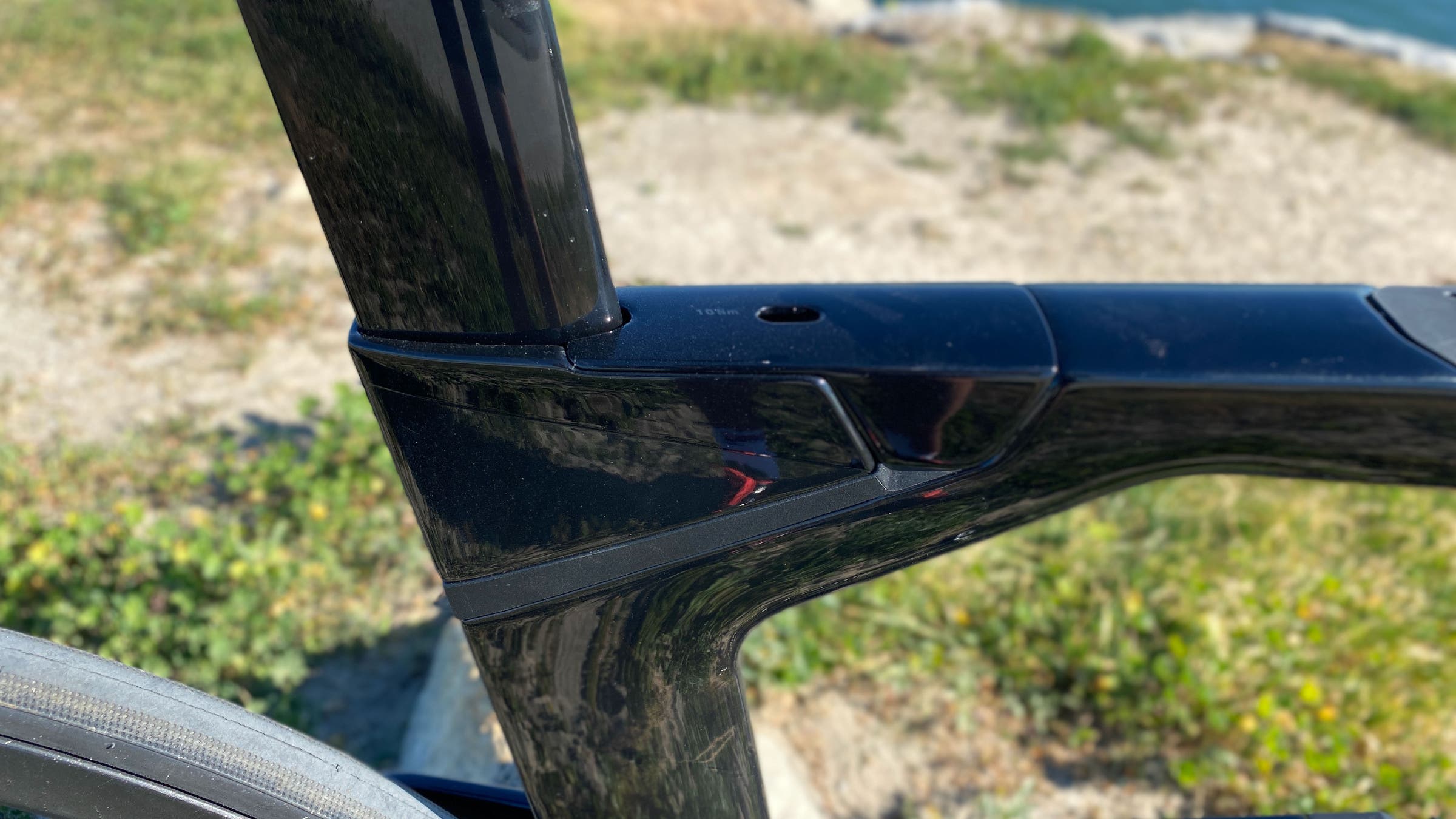
Elsewhere on the bike, the Trek comes with a fantastic saddle that’s both grippy (for wet butts) and cushy (for sore butts). The Speed Concept also offers a bit of built-in, aero-friendly storage in the form of a medium-sized water bottle that sits in the bottom of the frame triangle, a large-sized bento box that sits flush in the top tube with compartments for organization, and offers a between-the-bars hydration system (which we didn’t get to try). Under the triangle hydration bottle, you can also find space for a very novel flat-storage system (similar to what Canyon offers in their Speedmax line).
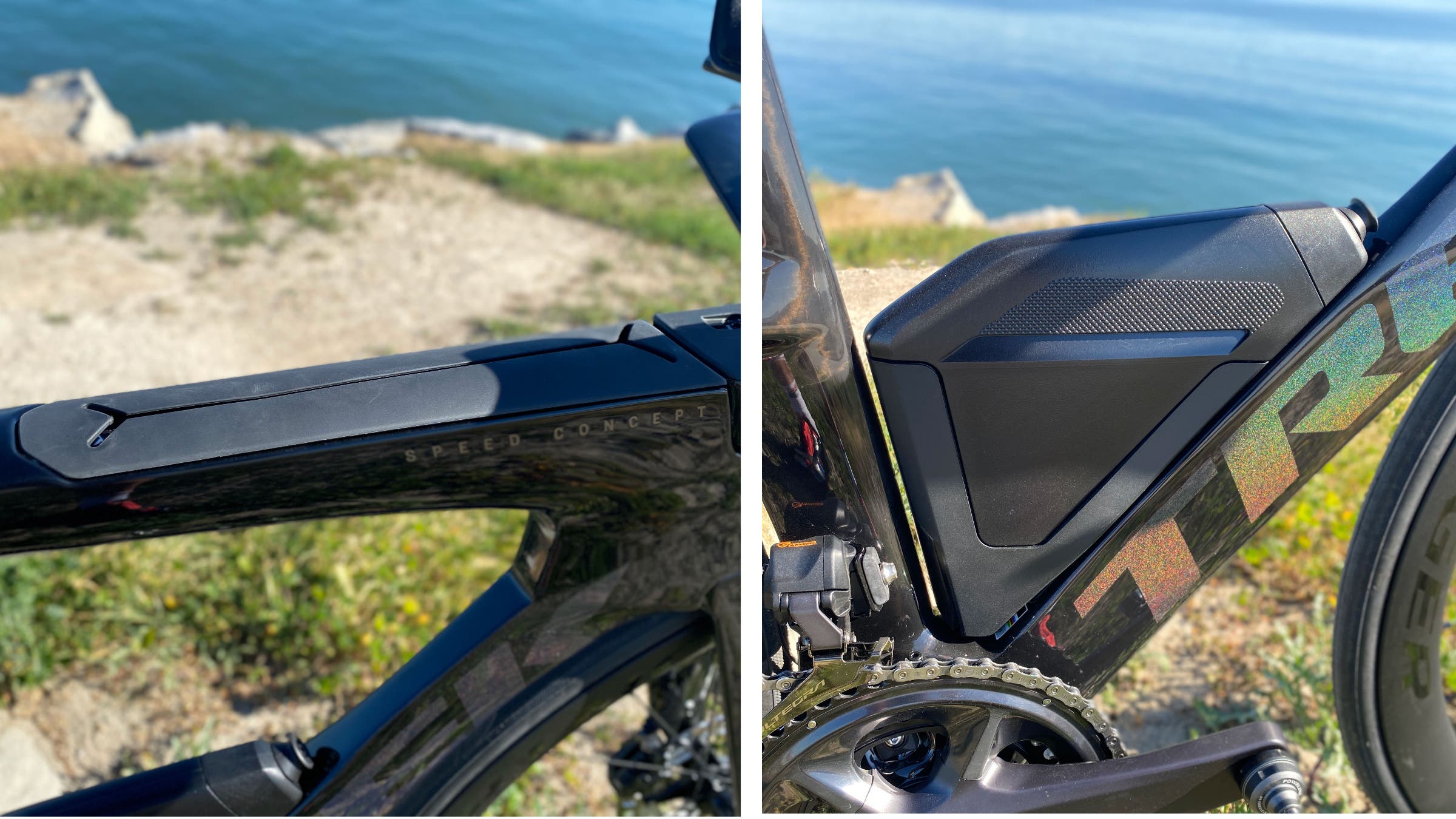
In terms of handling, the Trek was surprisingly a bit more twitchy than the Plasma (but only a bit) without any of the special ninja-like handling that usually accompanies that affliction. Likely due to the high basebar setup (which cannot be adjusted, due to the integrated and proprietary front end). As such, it wasn’t quite as comfortable at first when descending down big hills in the aerobars, but it was still better than most.
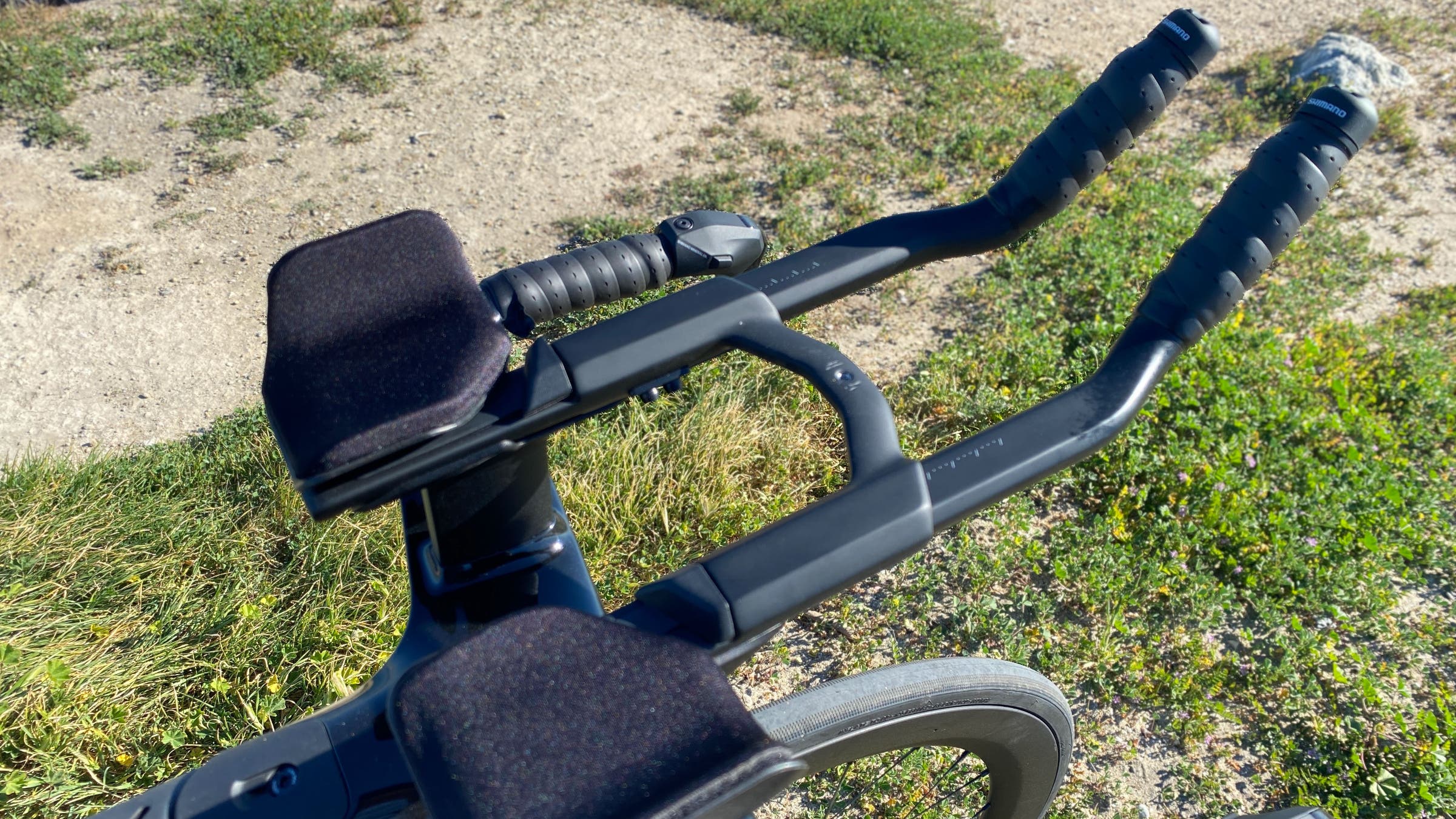
The Winner
If you’ve been keeping score up until this point, the winner might feel obvious, but it’s worth spelling out. We chose the Plasma 6 as the champion in this high-stakes, high-dollar shootout for a few key reasons: First, the ride and handling combo on the Plasma simply can’t be beat. The Speed Concept is still one of the best handling bikes we’ve ridden so far this year, but for whatever reason the Plasma is a better choice from Olympic up to Iron-distance. Second, as it’s been built for triathletes, it comes ready with all of the storage any distance triathlete would ever need. Yes, it does bring up the weight (where the Speed Concept duly shines), and it might be a little overkill for someone racing sprint- and Olympic-distance events, but it’s there when you need it, and it’s built-into the aerodynamic profile in a way that doesn’t require shoehorning.
Elsewhere, the Plasma’s bigger size range and more flexible fit options (terrible bar extensions notwithstanding) mean you won’t be stuck with half-measure adjustments as your position evolves through the life of the bike.
If we were going to split the winner a little bit on this one, we could say that the Speed Concept is a strong choice for 70.3 and below, while the Plasma shines with the long-courser in mind. The Trek is still a great bike that just happened to go up against one of the best—both in features and in ride quality—that we’ve seen in a while. Long live the reigning champ.